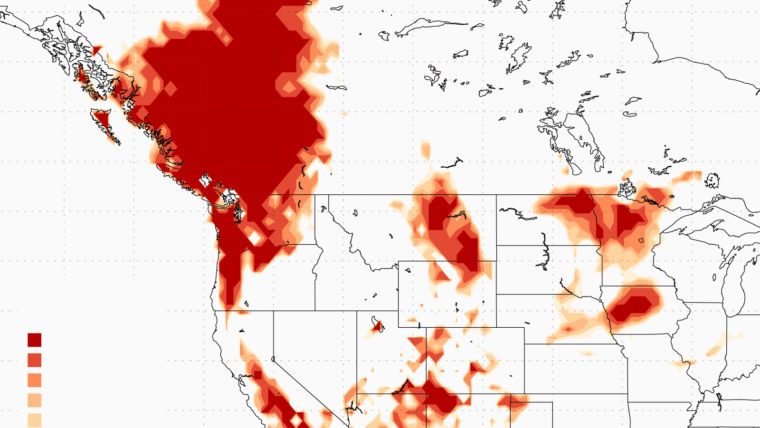Every week brings a wide array of articles that relate to and provide updated information and developments regarding many of the topics about which I report to you. Sometimes I will feature one subject in more detail while also now providing you with headlines and a brief quote from the featured article and others so you get the salient point(s) quickly and the link so you can check out more details if you wish.
This week I want to take a half step back and share with you first my overview of where I think we find ourselves at this time. Overall, there is reason for both hope and despair.
Hope. After decades of warnings, mine included, there is now a fairly universal recognition by citizens, governments/politicians and businesses that climate change is real, man made, existential and requires worldwide transformational action. Finally, this is beginning to happen in two regards.
First, across the globe new technology is being developed and incorporated that WILL change the trajectory of the release of climate warming elements most predominantly CO2 and methane. Momentum is building and the pace of change is accelerating both in the development of technology and implementation. Thus there is reason to believe that we will not experience what some forecast as the worst case scenario of the future if we did nothing and continue along the path that we were on.
Second, we are also beginning to plan for a greatly altered future and anticipate much more extreme weather and the consequences thereof. We are planning and already executing changes that will protect our infrastructure and where that is not sufficient, move people and facilities (think airports for example where runways will be underwater) to safe locations and elevations.
Despair. I think that things will be worse than most people envision in so far as we have already baked in additional climate warming emissions for many years to come while we wean ourselves from them. They will continue to remain in the atmosphere for up to 100 years after they are emitted and the impact of methane, which is said to be up to 80 times more harmful than CO2 (but much less of it is being emitted), will be much greater than is being projected. There are two reasons for this in my mind. There is much more being released than is being recorded and the feedback loop and sources are not well understood.
Furthermore, we are only now BEGINNING to recognize, understand and evaluate the full range of consequences that will occur. Some examples are the degree of risk and damage to infrastructure (housing, subways, runways, roads and highways, railroad tracks, power lines), food and farming including how crops can be harvested in extreme temperatures, emigration from areas of the planet that become uninhabitable due to heat and lack of water and thus food production and this impact on world geopolitics, public health and many more.
On balance, while I think we are ramping up our responses and will unquestionably alter our trajectory away from how bad it could be, where we are headed is going to be, for a lack of another description, really bad.
There is one more reason for hope though. Developments are occurring that are able to suck CO2 out of the atmosphere some of which I have described in previous articles. This field is ramping up. The technology is proving out but the cost so far is too high. If this can be brought to scale economically then maybe, just maybe, we have a chance to save our civilization in some semblance of what we experience today.
Cross your fingers and pray. And stay tuned here as I portray developments on both sides of this equation. As I will today.
Hope.
Transportation:
Bloomberg Hyperdrive 11/5/2021
Range Anxiety Gives Way to Charging Speed |
“Lucid announced the first deliveries of its Air sedan, which offers a peak charging rate of around 300 kW. At the proper plug, the sinuous sled will be able to add 300 miles of range in 20 minutes.”
E&E News 10/20/2021
Climate Change Fuels Drive Toward Cleaner Tractors
“The new tractor, called the AUGA M1, can fit larger biomethane gas cylinders, and cartridges can quickly be replaced. When the tractor is running, the biomethane engine transfers power to electric motors that move the wheels, while recharging the batteries.
The tractor can run for 12 hours, said the company, which aims to become carbon neutral by 2030.”
Automotive News 10/25/2021
https://www.autonews.com/commentary/rising-ev-residual-values-may-affect-ice-vehicles
Residual Value Risk Amid EV Transition: Will History Repeat Itself?
“the next few years as further improvement in EVs make them superior products compared with ICE vehicles in terms of driving experience and total cost of ownership. In other words, EVs can become the preferred vehicle to drive. When this happens, the market share of EVs will increase rapidly and ICE vehicles, now inferior substitutes, will likely have lower residual values.”
Finance:
Wall Street Journal 11/4/2021
https://www.wsj.com/articles/why-financing-the-multi-trillion-dollar-transition-to-net-zero-isnt-that-hard-11636018200
Why Financing the Multi-Trillion-Dollar Transition to Net Zero Isn’t That Hard
“Start with that $4 trillion figure. It’s how much the world must invest annually from 2026 to 2030 in low carbon energy, efficiency and carbon removal to reach net zero emissions by 2050, according to a report last month by the International Energy Agency. When scaled against expected global gross domestic product, that $4 trillion is a much less intimidating 2% to 3% of GDP. Subtract what the world already invests in energy and will no longer invest in fossil fuels, and the new investment drops further, to around 1% to 2%.”
““If there’s a revenue stream, then the funding is infinite.””
The New York Times November 3, 2021
Global Finance Industry Says it has $130 Trillion to Invest in Efforts to Tackle Climate Change.
“A coalition of the world’s biggest investors, banks and insurers that collectively control $130 trillion in assets said on Wednesday that they were committing to use that capital to hit net zero emissions targets in their investments by 2050, in a push that would make limiting climate change a central focus of most major financial decisions for decades to come.
The group, called the United Nations Glasgow Financial Alliance for Net Zero, is made up of 450 banks, insurers and asset managers in 45 countries. It said the pledge amounted to a transformation of the global financial system and would help businesses, financial firms and entire industries undergo fundamental restructuring for a carbon-neutral future.
“We now have the essential plumbing in place to move climate change from the fringes to the forefront of finance so that every financial decision takes climate change into account,””
Bloomberg Green 11/2/2021
BlackRock’s New Climate Finance Vehicle Draws $673 Million
https://www.bloomberg.com/news/articles/2021-11-02/blackrock-says-new-climate-finance-vehicle-draws-673-million?srnd=green&sref=pD2ECzY4&mc_cid=dbef707690&mc_eid=8f4760cc57
“BlackRock Inc. has drawn in $673 million in funding as part of a plan to invest in climate infrastructure in emerging markets.
The world’s largest asset manager says the money will go toward the Climate Finance Partnership, a public-private finance vehicle with a goal of accelerating the net-zero transition in developing countries, according to a statement on Tuesday. A consortium of 22 investors across the globe have committed to the project, which had an initial target of $500 million.”
Power Industry.
Canary Media 10/18/2021
https://www.canarymedia.com/articles/solar/chart-solars-breathtaking-price-plunge-and-dizzying-generation-growth?mc_cid=746ef1dd96&mc_eid=8f4760cc57
Chart: Solar’s Breathtaking Price Plunge and Dizzying Generation Growth
“As the cost of solar modules has declined over the past two decades, the amount of solar power produced around the world has accelerated dramatically — and it is poised to keep on growing at a fast clip…
Bond — a market analyst who’s worked for big banks, seemingly not a Pollyanna type — believes that technology learning curves like those for solar and wind will persist and ultimately lead to market domination and a renewables future that crowds out fossil fuels. It’s just a matter of math and markets.”
Public Perception.
The Guardian 11/3/2021
https://www.theguardian.com/environment/2021/nov/01/cop26-polling-data-is-overwhelming-people-want-leaders-to-act?mc_cid=dbef707690&mc_eid=8f4760cc57
Cop26: Polling Data is Overwhelming – People Want Leaders to Act
“Most people, everywhere: the biggest ever opinion poll on climate change, for the UN Development Programme, found two-thirds saying it is a “global emergency”. Across 50 countries, a majority in every one agreed. Both the young and the old agreed: 69% of those aged 14-18 and 58% of those over 60, indicating there is not a huge generational divide.”
Technology.
Bloomberg Opinion 11/2/2021
https://www.bloomberg.com/opinion/articles/2021-11-02/direct-air-capture-is-a-climate-solution-whose-time-has-come?cmpid=BBD110221_OUS&utm_medium=email&utm_source=newsletter&utm_term=211102&utm_campaign=openamericas
Finally! Bill Gates and Musk Agree on Something.
““Direct air capture” (DAC) — an industrial process that removes carbon dioxide from ambient air so it can be locked away underground (or recycled into products like synthetic fuels) — sounds like science fiction. However, the technology to vacuum clean the skies already exists; it just hasn’t been fully industrialized yet. It’s a climate insurance policy we shouldn’t ignore.”
“Carbon Engineering Ltd., a Canadian rival, is developing a 1 million tons a year plant in the U.S. Permian basin in partnership with Occidental Petroleum Corp., and another in northeast Scotland in conjunction with British firm Storegga. Storegga has attracted investment from M&G Plc, Macquarie Group Ltd., GIC (Singapore’s sovereign wealth fund) and Mitsui & Co. Ltd.
Even these are still several orders of magnitude too small to make a real dent in global emissions: We release about 39 billion tons of CO2 yearly. However, by starting small, the industry thinks it will learn how to construct much larger plants at lower cost. There’s no physical reason why “[we] won’t be able to take a ton of CO2 out of the air for around $100 in the next ten to 20 years,””
Despair.
Weather.
Financial Times 11/4/2021
Climate Change Could Bring Near-Unlivable Conditions for 3 Billion People, Say Scientists
“The majority of humans live in a very narrow mean annual temperature band of 52F to 59F (degrees). Researchers noted that despite all innovations and migrations, people had mostly lived in these climate conditions for several thousand years.”
Associated Press News 10/30/2021
https://apnews.com/article/climate-science-health-environment-and-nature-d1cd773bfb6000e0d77a58ea743c135f?mc_cid=dbef707690&mc_eid=8f4760cc57
Climate Change Reshaped Earth With Extreme Weather This Year
“Climate change in 2021 reshaped life on planet Earth through extreme weather…
A report from AIR Worldwide, a global risk modeling firm, estimates that now each year extreme weather is costing $320 billion around the world, with only about one-third of it insured.
“We now have five times the number of recorded weather disasters than we had in 1970, and they are seven times more costly,” Guterres said, speaking about global totals. “Even the most developed countries have become vulnerable.””
Financial Times 11/3/2021
https://www.ft.com/content/cc9e6267-13da-411a-a403-0b3960d27e05?mc_cid=dbef707690&mc_eid=8f4760cc57
Temperature Rises Threaten Ocean Flow Catastrophe in the Atlantic.
“Among many potential planetary “tipping points” — sudden and irreversible changes threatened by global warming — one of the more alarming is the possible collapse of the ocean circulation that sustains the Gulf Stream and, therefore, the mild climate of western Europe.
The Atlantic Meridional Overturning Circulation (Amoc) is like an immense marine conveyor that carries warm equatorial water northwards in the ocean’s upper layers while cooler water flows southward at greater depths. The heat transfer is equivalent to 10 Hiroshima-sized atomic bombs exploding every second, says Andrew Meijers, deputy science leader of the British Antarctic Survey’s polar oceans team.
Climate models have long predicted that Amoc will weaken as the world warms — and observations confirm that this is happening.”
Geopolitical.
Financial Times 11/3/2021
The Threat of Conflict Over Water is Growing
“The world is yet to see its first unambiguous water war. But the concerns about the links between conflict and water supply have not disappeared. If anything they are becoming more acute.
The root problem is simply stated. The world’s population is growing and so is the demand for water. Meanwhile, the supply of fresh water is being depleted by climate change and economic development. As Brahma Chellaney, author of the book, Water, Peace and War, puts it: “Freshwater is increasingly in short supply, with nearly two-thirds of the global population living in water-stressed conditions.” “




